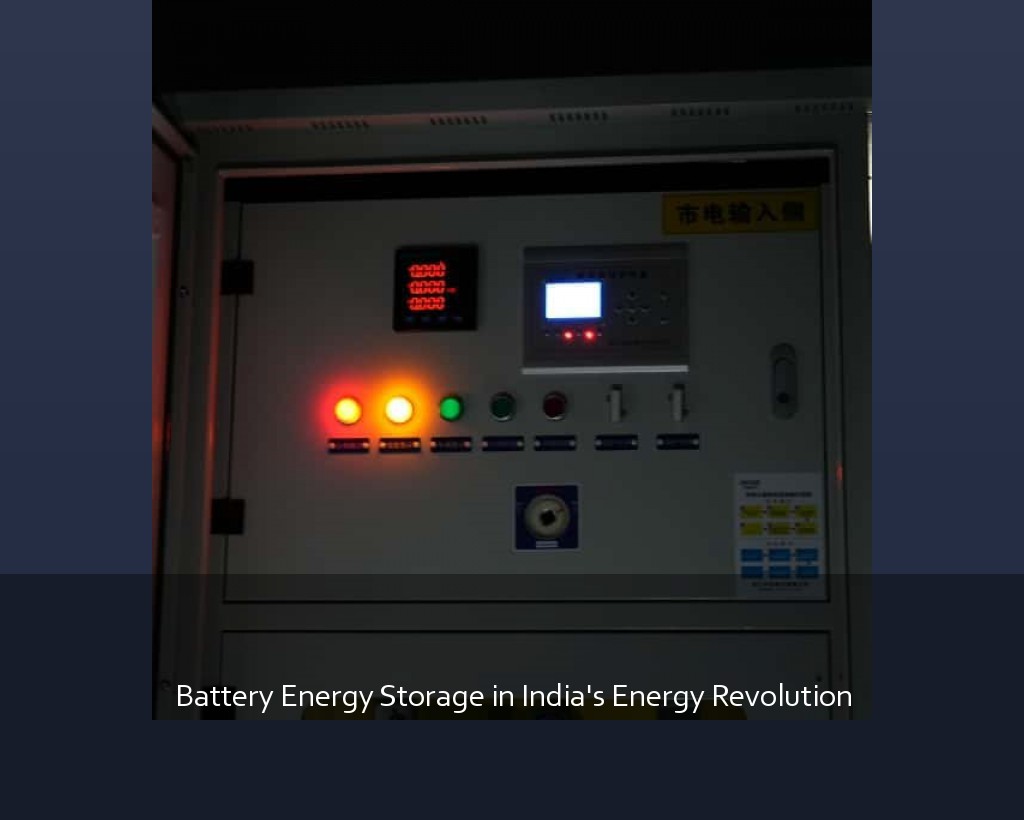Battery Energy Storage in India's Energy Revolution
India's been walking a tightrope between coal dependency and renewable ambitions. With 70% of electricity still coming from fossil fuels, the grid's crying out for flexible BESS solutions. But here's the kicker: the country's solar parks often sit idle during peak demand hours. Ever wondered why? It's not about generation capacity anymore - it's about storing sunshine for midnight use.
Battery Energy Storage in India's Energy Revolution

Table of Contents
Why India Needs Large-Scale Energy Storage Now
India's been walking a tightrope between coal dependency and renewable ambitions. With 70% of electricity still coming from fossil fuels, the grid's crying out for flexible BESS solutions. But here's the kicker: the country's solar parks often sit idle during peak demand hours. Ever wondered why? It's not about generation capacity anymore - it's about storing sunshine for midnight use.
The Coal Conundrum and Renewable Ambitions
Last month's heatwave saw Delhi hospitals rationing electricity while solar farms in Rajasthan curtailed production. This absurd paradox explains why India's targeting 500GW renewable capacity by 2030 - a goal requiring 160GWh of storage according to NITI Aayog. Without battery systems, we're just building a sports car without brakes.
The BESS Landscape in 2025: Where Are We?
Walk through any major Indian battery facility today, and you'll see three technologies battling for dominance:
- Lithium-ion (80% market share)
- Emerging sodium-ion prototypes
- Reengineered lead-acid systems
Lithium-Ion Dominance and Emerging Alternatives
Tata Power's new Jammu facility uses temperature-resistant lithium ferro phosphate chemistry - a smart move given India's 45°C summers. But wait, isn't lithium dependent on imports? That's where startups like Indi Energy come in, commercializing sulfur-based sodium-ion batteries using agricultural waste.
Real-World Impact: Case Studies Lighting the Path
Let me tell you about the Dharnai Miracle. This Bihar village suffered 18-hour daily blackouts until a 1MWh BESS paired with solar transformed it into a 24/7 power hub. Farmers now irrigate at night using stored solar energy, increasing crop yields by 40%.
Solar-BESS Hybrid Projects Gaining Traction
SECI's latest auction saw record-low tariffs of ₹4.50/kWh for solar-storage hybrids - cheaper than new coal plants! The winning project combines bifacial panels with liquid-cooled batteries, demonstrating India's knack for frugal innovation.
Breaking the Cost Barrier: Localization Wins
Five years back, imported batteries ate up 60% of project costs. Today, domestic cell manufacturing and simplified energy management systems (EMS) have slashed prices by half. Take Amara Raja's new gigafactory - its vertically integrated production cuts logistics costs through:
- Local lithium processing
- AI-driven battery grading
- Recycling partnerships
But here's the rub - while lithium costs keep falling, we're still missing a homegrown battery chemistry tailored to India's climate. That's where CSIR's work on high-temperature electrolytes could be a game-changer.
The Rural Storage Revolution
A Telangana farmer uses her smartphone to sell stored solar energy to neighboring villages via peer-to-peer trading. With 500,000 battery storage units deployed under the PM Surya Ghar scheme, this isn't sci-fi - it's India 2025.
The road ahead? Bitterly competitive but thrilling. As states like Gujarat mandate 8-hour storage for new solar parks, the industry's scrambling to deliver reliable, affordable solutions. One thing's clear - India's energy future won't be powered by single technology, but by smart combinations of storage, software, and grassroots ingenuity.
Related Contents

Battery Energy Storage Systems (BESS): The Brain Behind Renewable Energy Revolution
Ever wondered why your solar panels stop working at night? Or why wind farms sometimes pay customers to take their excess electricity? The answer lies in energy storage - or rather, the lack of it. As of March 2025, over 30% of renewable energy generated worldwide gets wasted due to inadequate storage solutions. That's enough to power entire cities!

Battery Energy Storage Systems: The Brain Behind Renewable Energy Revolution
Let’s cut through the jargon first. A Battery Energy Storage System (BESS) isn’t just a fancy battery pack—it’s the central nervous system of modern renewable energy setups. Imagine your smartphone battery, but scaled up to power factories, neighborhoods, or even entire grids. Unlike traditional power plants that generate electricity on demand, BESS stores excess energy when production exceeds consumption and releases it when needed. Think of it as a giant energy savings account with instant withdrawal capabilities.

Battery Energy Storage Systems (BESS): Powering the Renewable Energy Revolution
California's grid operators curtailed enough solar energy in 2023 to power 1.5 million homes for a year. That's the equivalent of throwing away 1.4 billion pounds of coal's energy potential. Meanwhile, Texas faced rolling blackouts during a winter storm while wind turbines stood frozen. This energy paradox - abundance vs. scarcity - lies at the heart of our renewable energy challenges.

Battery Energy Storage Systems (BESS): Powering the Renewable Energy Revolution
Let's cut through the jargon: Battery Energy Storage Systems (BESS) are essentially giant power banks for our electrical grids. Imagine being able to store solar energy captured at noon to power your Netflix binge at midnight – that's BESS in a nutshell. These systems combine advanced batteries with smart management tech to store electricity when production exceeds demand and release it when needed.

Battery Energy Storage Systems: Powering Renewable Energy Transition
You know how people talk about renewable energy like it's some magic bullet? Well, here's the kicker: solar panels don't work when it's cloudy, and wind turbines stand still on calm days. This intermittency problem costs the global economy $12 billion annually in wasted clean energy - enough to power 15 million homes. That's where battery energy storage systems (BESS) come charging in, quite literally.
